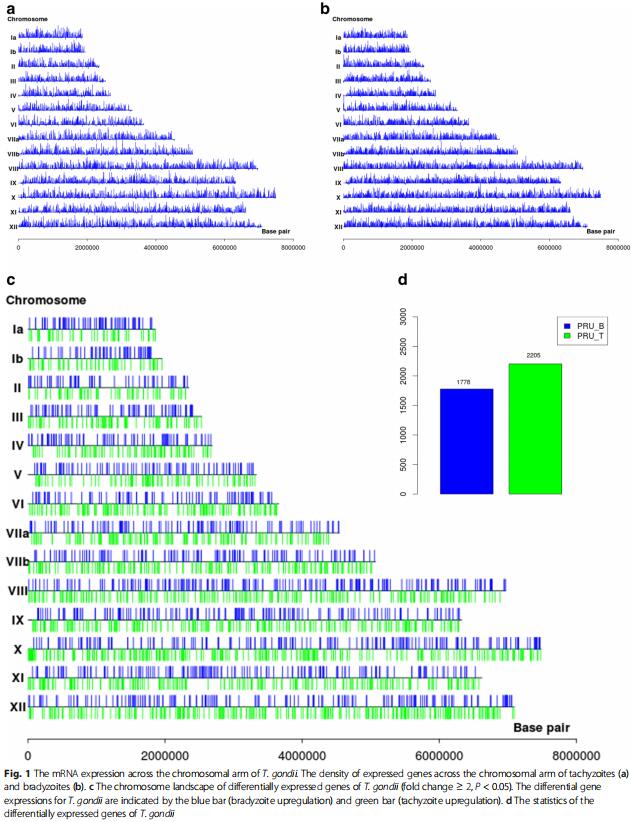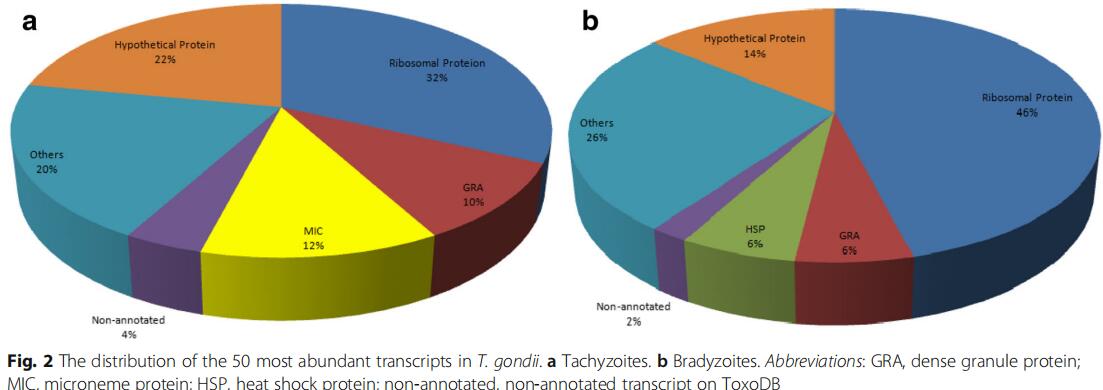Long-Fei Chen, Xiao-Long Han, Fen-Xiang Li, Yun-Ying Yao, Jin-Ping Fang, Xiao-Ju Liu, Xiao-Cong Li, Kun Wu, Min Liu*, Xiao-Guang Chen*
ABSTRACT
Background: Toxoplasma gondii is one of the most important apicomplexan parasites and infects one-third of the human population worldwide. Transformation between the tachyzoite and bradyzoite stages in the intermediate host is central to chronic infection and life-long risk. There have been some transcriptome studies on T. gondii; however, we are still early in our understanding of the kinds and levels of gene expression that occur during the conversion between stages.
Results: We used high-throughput RNA-sequencing data to assemble transcripts using genome-based and de novo strategies. The expression-level analysis of 6996 T. gondii genes showed that over half (3986) were significantly differentially expressed during stage conversion, whereas 2205 genes were upregulated, and 1778 genes were downregulated in tachyzoites compared with bradyzoites. Several important gene families were expressed at relatively high levels. Comprehensive functional annotation and gene ontology analysis revealed that stress response related genes are important for survival of bradyzoites in immune-competent hosts. We compared Trinity-based de novo and genome-based strategies, and found that the de novo assembly strategy compensated for the defects of the genome-based strategy by filtering out several transcripts with low expression or those unannotated on the genome. We also found some inaccuracies in the ToxoDB gene models. In addition, our analysis revealed that alternative splicing can be differentially regulated in response to life-cycle change. In depth analysis revealed a 20-nt, AG-rich sequence, alternative splicing locus from alt_acceptor motif search in tachyzoite.
Conclusion: This study represents the first large-scale effort to sequence the transcriptome of bradyzoites from T. gondii tissue cysts. Our data provide a comparative view of the tachyzoite and bradyzoite transcriptomes to allow a more complete dissection of all the molecular regulation mechanisms during stage conversions. A better understanding of the processes regulating stage conversion may guide targeted interventions to disrupt the transmission of T. gondii.
Parasites & Vectors. 2018; 11: 402.
DOI : https://doi.org/10.1186/s13071-018-2983-5

